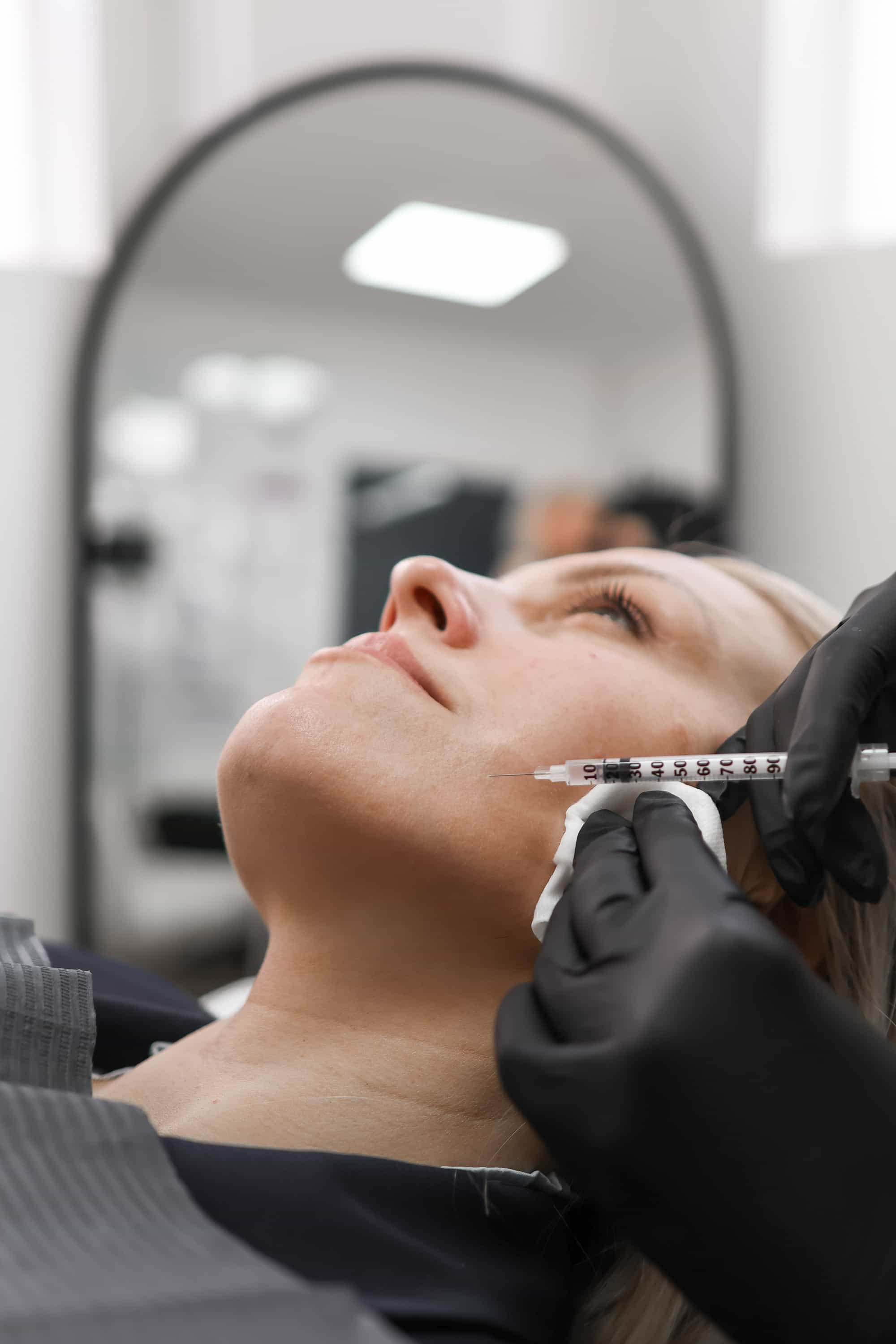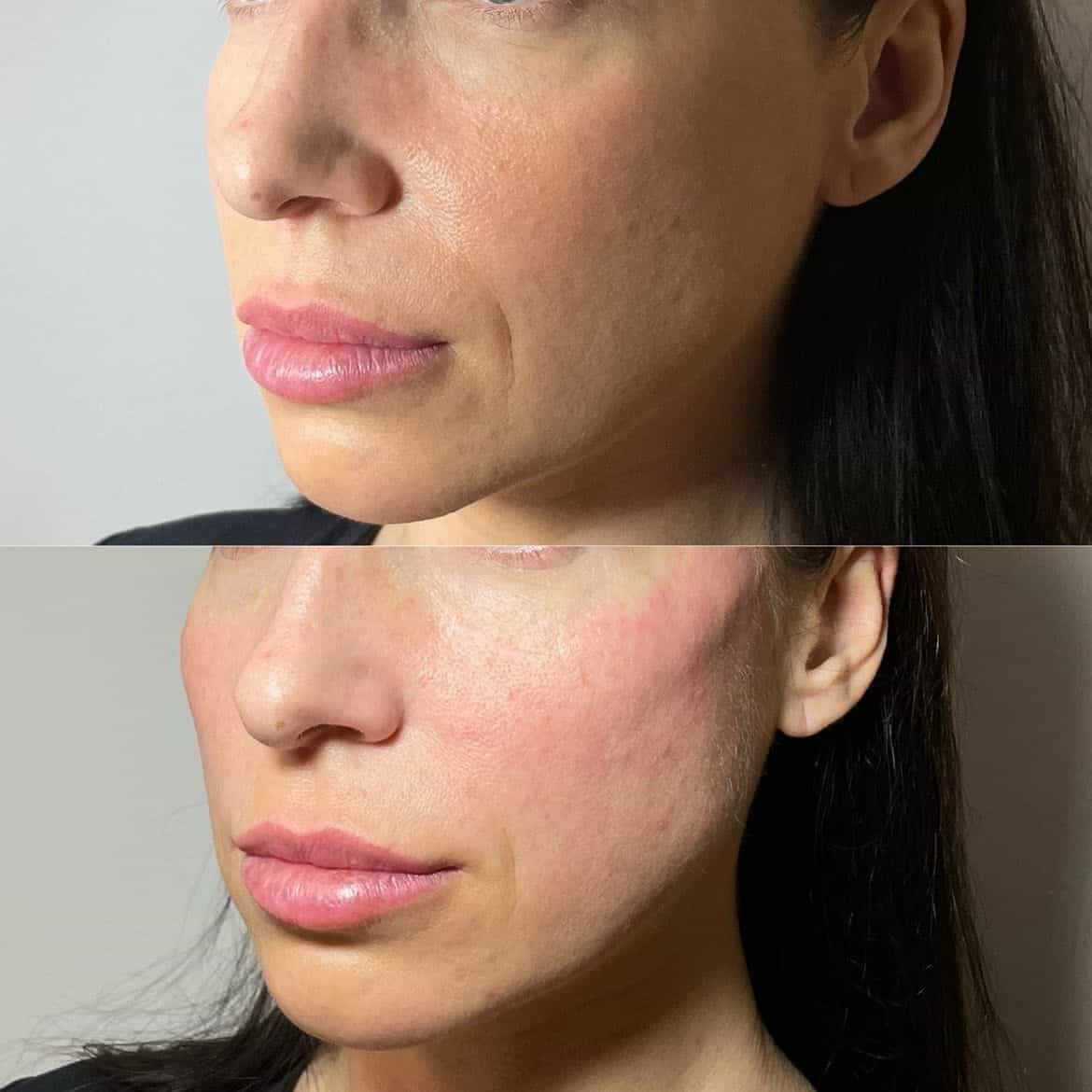Factors Affecting Treatment Duration
Determining the length of treatment for a downturned smile involves considering several key factors.
Severity of the Downturned Smile
These factors encompass the severity of the downturn, the underlying cause, the chosen treatment method, and individual patient characteristics such as bone structure and response to therapy.
For instance, mild cases may respond well to non-surgical approaches like Botox injections or facial exercises, potentially requiring only a few weeks to achieve noticeable improvements.
More severe downturned smiles might necessitate orthodontic treatment, involving braces or Invisalign, which typically spans several months to two years.
Surgical interventions, such as jaw repositioning or lip lift procedures, generally have longer recovery times and may involve weeks of postoperative care.
Age and Jaw Development

Age plays a significant role in determining treatment duration for a downturned smile. Younger patients whose jaws are still developing often have more flexibility, allowing for faster results from orthodontic treatments like braces or Invisalign. As the jaw matures, bone structure becomes more rigid, potentially extending treatment time.
Jaw development is also crucial. Individuals with underdeveloped mandibles (the lower jaw) may require longer treatment to achieve optimal symmetry and balance. Conversely, those with pronounced mandibles might experience faster results as the downturned smile can be addressed more directly.
Underlying Cause
Understanding the underlying cause of a downturned smile is crucial for determining the appropriate treatment duration. A downturn caused by muscle imbalance, such as a weak depressor anguli oris muscle, might respond well to non-surgical treatments like Botox injections or facial exercises.
These interventions often produce visible results within a few weeks.
If the downturn stems from skeletal issues, such as an underdeveloped jaw or malaligned teeth, more extensive treatment is needed. Orthodontic therapies like braces or Invisalign can gradually correct these structural problems, taking several months to two years to achieve the desired outcome.
In cases where facial anatomy contributes to the downturned smile, surgical options like a lip lift or jaw repositioning may be necessary. Recovery from surgery can take weeks to months, and treatment duration depends on the complexity of the procedure and individual healing processes.
Treatment Options
The length of treatment for a downturned smile varies depending on multiple factors.
Severity of the downturn, underlying causes, chosen treatment method, and individual patient characteristics like bone structure all play a role in determining treatment duration.
Orthodontic Braces
Treatment options for a downturned smile range from non-surgical interventions to surgical procedures, with each approach carrying varying durations.
Non-surgical methods, such as Botox injections or facial exercises, can address muscle imbalances and potentially yield noticeable results within weeks. Orthodontic treatment, utilizing braces or Invisalign, typically spans several months to two years to correct structural issues affecting teeth alignment and jaw position.
Surgical interventions, like lip lifts or jaw repositioning, often require longer recovery times and may involve several weeks of postoperative care.
Traditional Metal Braces
Treatment options for a downturned smile vary based on the severity and cause of the downturn.
- Non-surgical Options: Botox injections or facial exercises can address muscle imbalances, potentially leading to noticeable improvements within a few weeks.
- Orthodontic Treatment: Braces or Invisalign can correct structural issues affecting teeth alignment and jaw position. This treatment typically lasts several months to two years.
- Surgical Options: Procedures like lip lifts or jaw repositioning can be used to correct anatomical features contributing to the downturned smile. Recovery from surgery can take weeks to months.
Ceramic Braces
Ceramic braces offer a discreet alternative to traditional metal braces for correcting a downturned smile.

Made from tooth-colored porcelain or ceramic, they blend seamlessly with your natural teeth, making them less noticeable than metal braces. Ceramic brackets are typically larger than metal ones, which can affect the application and removal process.
Like metal braces, ceramic braces use similar mechanics to gradually shift teeth into their desired positions. Treatment duration for a downturned smile with ceramic braces is generally comparable to traditional metal braces, ranging from several months to two years depending on the severity of the case.
Lingual Braces
Lingual braces are an option for individuals seeking orthodontic treatment discreetly.
These braces are attached to the inside surface of the teeth, making them invisible from the outside. Lingual braces function similarly to traditional braces, utilizing brackets and wires to gradually align teeth.
Treatment duration with lingual braces is comparable to traditional braces, typically ranging from several months to two years.
The length of treatment depends on the complexity of the case and individual patient response to therapy.
Invisalign
Treatment options for a downturned smile vary based on the severity and cause of the downturn.
- Non-surgical Options: Botox injections or facial exercises can address muscle imbalances, potentially leading to noticeable improvements within a few weeks.
- Orthodontic Treatment: Braces or Invisalign can correct structural issues affecting teeth alignment and jaw position. This treatment typically lasts several months to two years.
- Surgical Options: Procedures like lip lifts or jaw repositioning can be used to correct anatomical features contributing to the downturned smile. Recovery from surgery can take weeks to months.
Advantages of Invisalign for Downturned Smiles
Invisalign offers several advantages for treating a downturned smile.
Firstly, Invisalign aligners are nearly invisible, making them a discreet treatment option compared to traditional braces.
Secondly, their removable nature allows for easier oral hygiene, as patients can take out the aligners for brushing and flossing.
This is important because good oral hygiene is crucial during orthodontic treatment to prevent cavities and gum disease.
Invisalign also offers greater patient comfort.
Unlike braces, which can have wires and brackets that poke and irritate gums and cheeks, Invisalign aligners are smooth and comfortable to wear.
Additionally, the gradual adjustments made by Invisalign aligners often result in less discomfort compared to the sudden pressure changes associated with traditional braces.
Expected Treatment Timeline
Determining the length of treatment for a downturned smile is a multifaceted process influenced by several key factors.
Initial Consultation and Planning
The severity of the downturn, its underlying cause, and the chosen treatment method all play a significant role in determining how long treatment will take.
Initial consultations are crucial for assessing the specific characteristics of each case and developing a personalized treatment plan.
During this consultation, a qualified professional will examine your smile, discuss your concerns and goals, and review your medical history.
They may take X-rays or other imaging studies to get a comprehensive view of your jaw structure and teeth alignment.
Based on the evaluation, a treatment plan will be proposed, outlining the recommended approach, potential duration, and expected outcomes.
Active Treatment Phase
The length of time required for treatment varies greatly depending on the severity of the downturned smile and the chosen treatment method.
For milder cases, non-surgical options like Botox injections or facial exercises might produce visible results within a few weeks.
More complex cases involving structural issues may necessitate orthodontic treatments such as braces or Invisalign, with treatment durations ranging from several months to two years.
Surgical interventions, including jaw repositioning or lip lifts, typically involve longer recovery times and can span several weeks to months.
Orthodontic Brace Treatment
Treatment for a downturned smile varies depending on the cause and severity.
Mild cases might see improvement in a few weeks with non-surgical methods like Botox injections or facial exercises.
Orthodontic treatments like braces or Invisalign, which take several months to two years, are often needed for more severe cases involving structural issues.
Surgical options like jaw repositioning or lip lifts can correct anatomical features but have longer recovery times, potentially taking weeks to months.
Invisalign Treatment
Treatment durations for a downturned smile vary depending on several factors.
- Severity of the Downturn: Mild cases may resolve with non-surgical options in a few weeks, while more severe cases requiring orthodontic or surgical treatment could take several months to years.
- Underlying Cause: Muscle imbalances often respond well to non-surgical interventions like Botox injections. Structural issues, however, necessitate longer treatments with braces or Invisalign.
- Treatment Method: Non-surgical methods provide quicker results, while orthodontic treatment takes several months to years. Surgical procedures have varying durations depending on the complexity.
Retention Phase
Determining the length of treatment for a downturned smile involves considering several key factors.
- Severity of the Downturn: Mild cases may respond well to non-surgical approaches like Botox injections or facial exercises, potentially requiring only a few weeks to achieve noticeable improvements. More severe downturned smiles might necessitate orthodontic treatment, involving braces or Invisalign, which typically spans several months to two years.
- Underlying Cause: A downturn caused by muscle imbalance, such as a weak depressor anguli oris muscle, might respond well to non-surgical treatments like Botox injections or facial exercises. These interventions often produce visible results within a few weeks. If the downturn stems from skeletal issues, such as an underdeveloped jaw or malaligned teeth, more extensive treatment is needed. Orthodontic therapies like braces or Invisalign can gradually correct these structural problems, taking several months to two years to achieve the desired outcome.
- Treatment Method: Non-surgical methods, such as Botox injections or facial exercises, can address muscle imbalances and potentially yield noticeable results within weeks. Orthodontic treatment, utilizing braces or Invisalign, typically spans several months to two years to correct structural issues affecting teeth alignment and jaw position. Surgical interventions, like lip lifts or jaw repositioning, often require longer recovery times and may involve several weeks of postoperative care.
Correct your downturned smile today with Dr. Laura Geige at It’s Me & You Clinic.
- Skin Injectables Near West Clandon, Surrey - May 18, 2025
- How To Care For Your Skin After Marionette Lines Fillers In Kingston Upon Thames - May 16, 2025
- Botox Brow Lift In Walton-on-Thames, Surrey - May 16, 2025
